
USS Vancouver (LPD-2) was a Raleigh-class amphibious transport dock, named after the city of Vancouver, Washington, which was in turn named after the famous north-west explorer George Vancouver. Vancouver's was commissioned 11 May 1963 and served during the Vietnam War and 1991 Gulf War. She was decommissioned 27 March 1992, placed in reserve and stricken 8 April 1997. Title was transferred to the United States Maritime Administration 29 November 2001. Vancouver was towed for scrapping in Brownsville, Texas, in April 2013.

USS Talladega (APA/LPA-208) was a Haskell-class attack transport of the US Navy. She was of the VC2-S-AP5 Victory ship design type. Talladega was named for Talladega County, Alabama.

USS Frybarger (DE/DEC-705) was a Buckley-class destroyer escort in service with the United States Navy from 1944 to 1947 and from 1950 to 1957. She was scrapped in 1973.
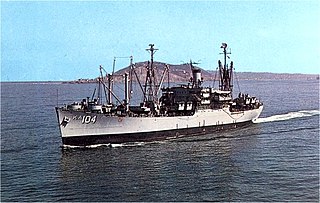
USS Seminole (AKA-104/LKA-104) was a Tolland-class attack cargo ship in service with the United States Navy from 1945 to 1970. She was scrapped in 1977.

USS Washburn (AKA-108) was a Tolland-class attack cargo ship in service with the United States Navy from 19945 to 1970 She was scrapped in 1980.

USS Tulare (AKA-112/LKA-112) was a Tulare-class attack cargo ship in service with the United States Navy from 1956 to 1986. She was sold for scrap in 2011.

USS Winston (AKA-94/LKA-94) was an Andromeda-class attack cargo ship in service with the United States Navy from 1945 to 1957 and from 1961 to 1969. She was scrapped in 1979.

USS Highlands (APA-119) was a Haskell-class attack transport built and used by the US Navy in World War II. She was a Victory ship design, VC2-S-AP5. She was named after Highlands County, Florida, United States.

USS Botetourt (APA-136) was a Haskell-class attack transport in service with the United States Navy from 1945 to 1946 and from 1950 to 1956. She was scrapped in 1974.

USS Pickaway (APA/LPA-222) was a Haskell-class attack transport that saw service with the US Navy in World War II, the Korean War and the Vietnam War. She was of the VC2-S-AP5 Victory ship design type and named after Pickaway County, Ohio.

USS Pitkin County (LST-1082) was an LST-542-class tank landing ship built for the United States Navy during World War II. Named after Pitkin County, Colorado, she was the only U.S. Naval Vessel to bear the name.
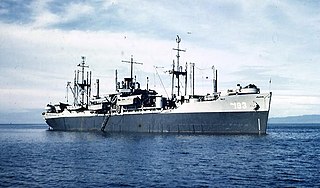
USS Sanborn (APA-193) was a Haskell-class attack transport acquired by the U.S. Navy during World War II for the task of transporting troops to and from combat areas.
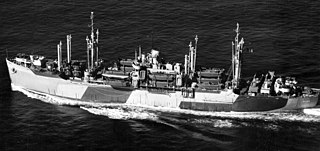
USS Magoffin (APA/LPA-199) was a Haskell-class attack transport in service with the United States Navy from 1944 to 1946 and from 1950 to 1968. She was scrapped in 1980.

USS Henrico (APA-45) was a Bayfield-class attack transport that served with the United States Navy in World War II, and subsequently in the Korean War, Cold War and Vietnam War.

USS Leon (APA-48) was a Bayfield-class attack transport in service with the United States Navy from 1944 to 1946. She was sold into commercial service in 1947 and was scrapped in 1971.

USS Telfair (APA/LPA-210) was a Haskell-class attack transport that saw service with the US Navy in World War II and the Korean War. She remained in service through most of the 1950s and 1960s, where she participated in various peacetime operations. Telfair was named for Telfair County, Georgia, which was itself named after Edward Telfair, the second Governor of the state, a member of the Continental Congress, and a signer of the Articles of Confederation.

USS Navarro (APA/LPA-215) was a Haskell-class attack transport of the US Navy. She was of the VC2-S-AP5 Victory ship design type that saw service in World War II and the Vietnam War. Navarro was named after Navarro County, Texas.
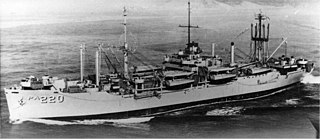
USS Okanogan (APA/LPA-220) was a Haskell-class attack transport that saw service with the US Navy in World War II, the Korean War and the Vietnam War. She was of the VC2-S-AP5 Victory ship design type and named after Okanogan County, Washington.
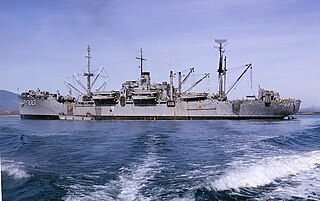
USS Renville (APA-227) was a Haskell-class attack transport that saw service with the US Navy in World War II, the Korean War and the Vietnam War.

USS Wantuck (APD-125) was a United States Navy high-speed transport in commission from 1944 to 1957.





















